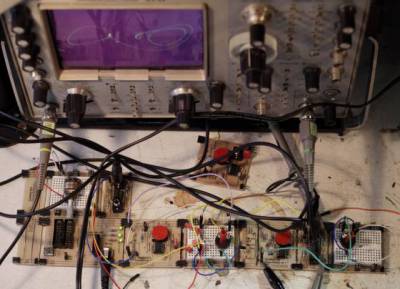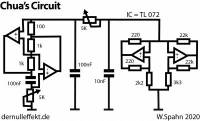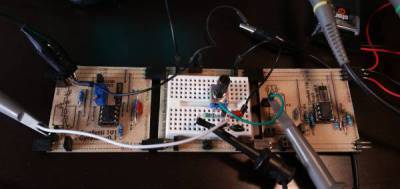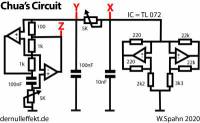Table of Contents
A Butterfly in an Analogue Computer
by Wolfgang Spahn
20 Nov 2021
Piksel 21
A workshop for an Chua Circuit with in an analog computer to generate
chaotic signals, noise and sound.
This circuit generates chaotic signals over a wide range of frequency
therefore it is an interesting device for noise and sound art,
performances and installations.
In the 1970th Edward Lorenz developed a mathematical model for the
weather and climate prediction, the Lorenz Attractor, a strange
attractor with chaotic and fractal behavior and sensible initials
conditions, that in the end could lead for example to a tornado in
Brazil - the so called Butterfly Effect.
At that time it was not possible to compute this module with in an
analog computer, the chips for doing the multiplication were to
noisy. That’s why in 1983 Leon O. Chua introduced a much simpler
circuit (no multiplication) with the same chaotic behavior, the Chua
Circuit.
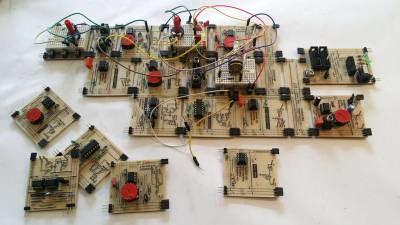
The Analog Computer Confetti is a modular system that makes it
possible to perform all kind of computations and operations on base
of electrical voltage. This stack able modular electronic analog
computation system was and is still developed by Wolfgang Spahn since
2015.
Chua’s Circuit can be made out of two modules of the analog computer Confetti, aGyrator and the Chuas Diode. The analogue computer Confetti is a modular system that makes it possible to perform all kind of electronic computations.
In the workshop we will learn the basic functions of an analog
computer. We also will build the two main components for an Chua
Circuit as modules of the analog computer Confetti: a Gyrator and a
Chua Diode. With these two modules we will create the Chua Circuit to
listen to the butterfly in our tornado.
Part 1: Background, Introduction and Build
About Anlogue Computation
... and Chua's Circuit
Build an Analogue Computer
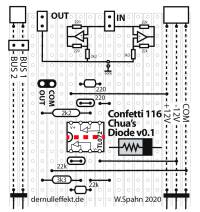
Confetti 116 Chua's Diode
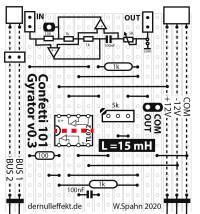
Confetti101 Gyrator
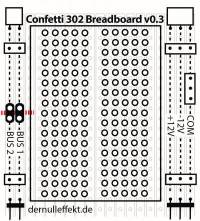
Confetti302 Breadboard
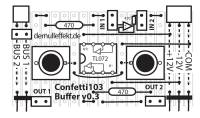
Confetti103 Buffered Output

Confetti 9V Battery Supply
Part 2: See, Listen and Discover
writing a progrmm for an analogue computer
X-Y-Z Visualisation
Voltage Control
OpAmp with a LDR in the feedback loop.
Voltage Controlled Amplifier (VCA)_wikipedia.org
Operational Transconductive Amplifier (OTA) _wikipedia.org
LM13700 _wikipedia.org
CA3080, LM3080
CA3080AE _banzaimusic.com
Links & Recources
https://www.chaotic-circuits.com/
http://www.chuacircuits.com/
http://nldlab.gatech.edu/w/index.php?title=Group_3_2012
http://www.instructables.com/id/A-Simple-Chaos-Generator
http://www.scholarpedia.org/article/Chua_circuit
http://crossgroup.caltech.edu/chaos_new/Chua.html
http://jamesnsears.com/archive/ecechua.htm
https://hypertextbook.com/chaos/strange/
https://www.vanderbilt.edu/AnS/psychology/cogsci/chaos/workshop/WorkshopF.html
if not other mentioned contend of this page is by Wolfgang Spahn (2008-2021) All Rights Reserved

